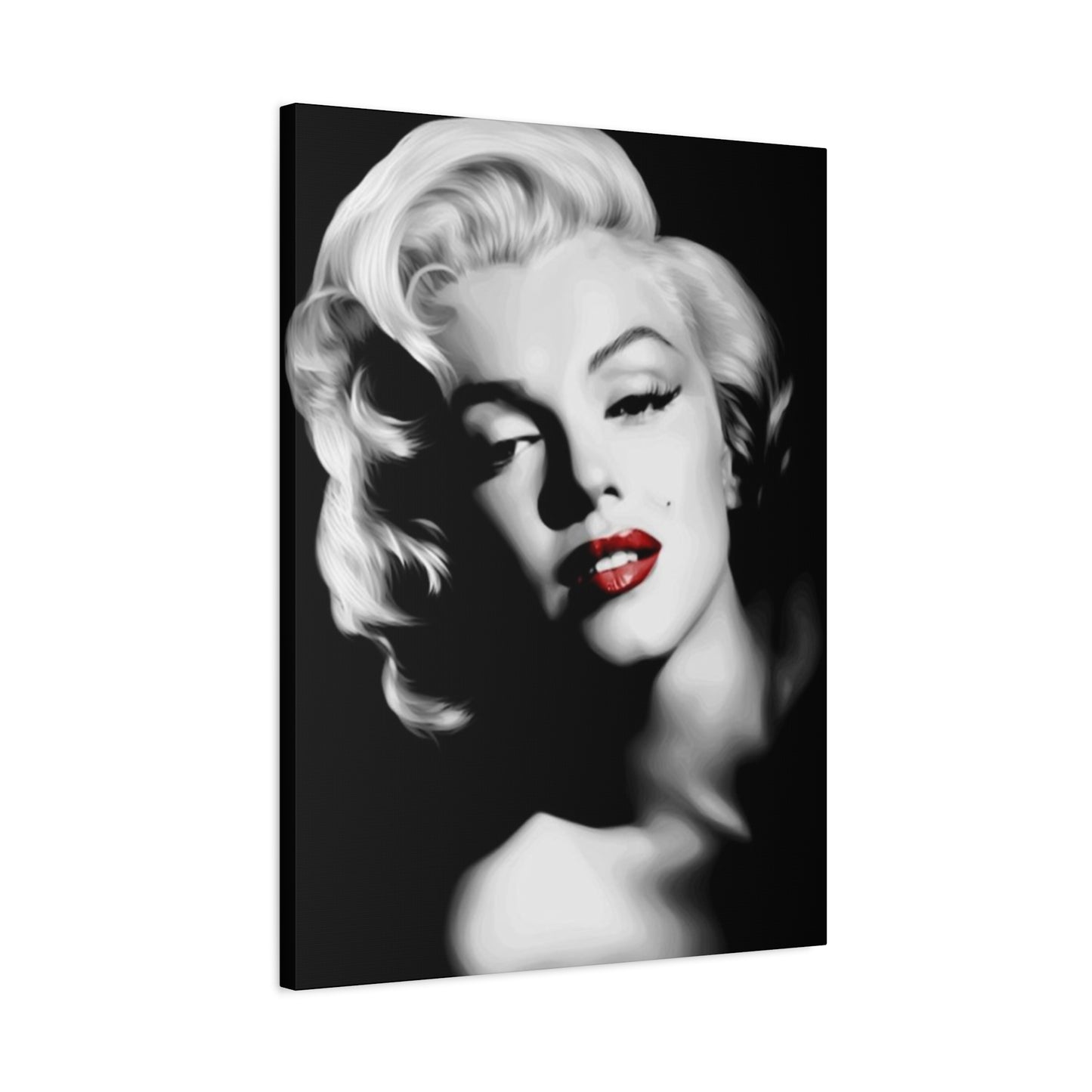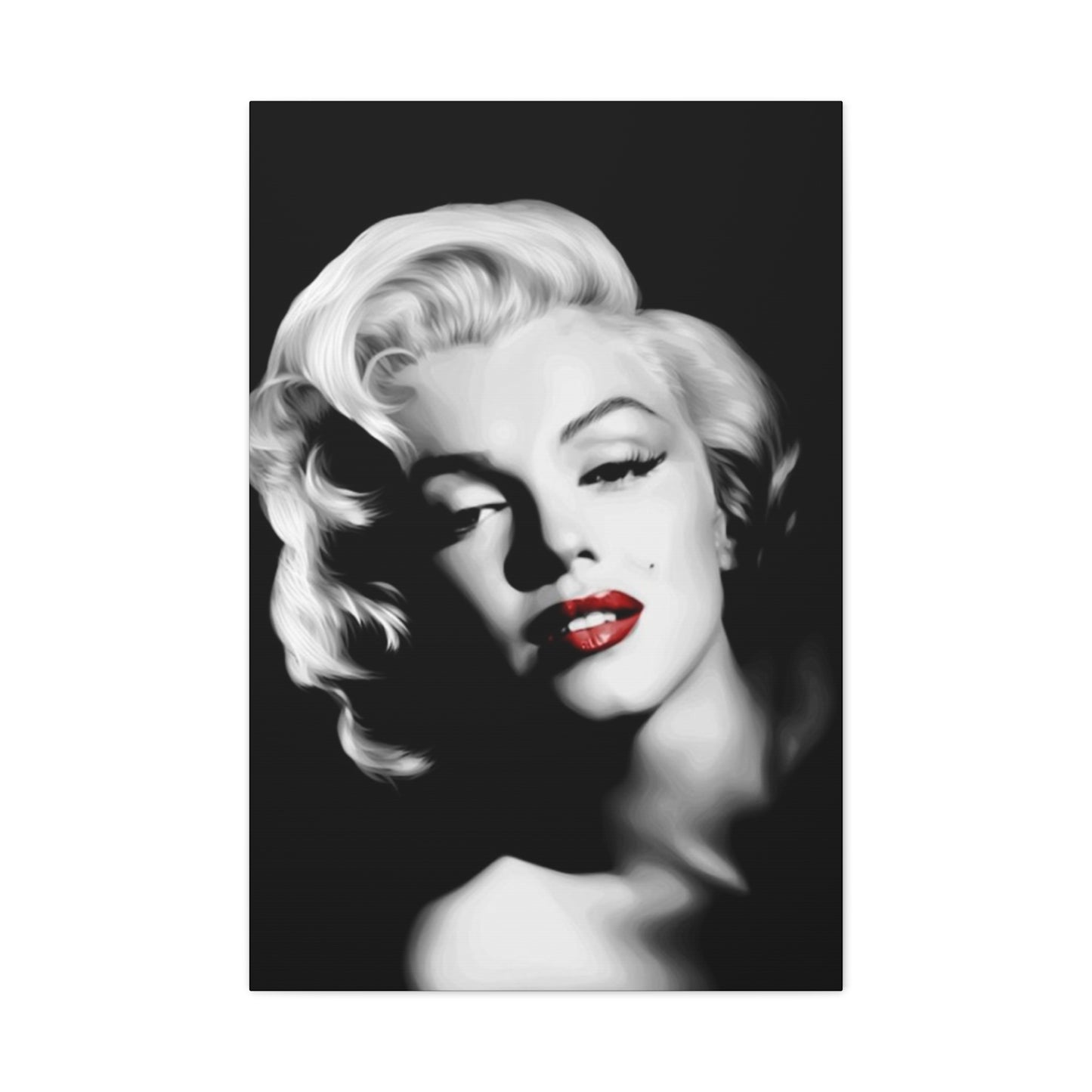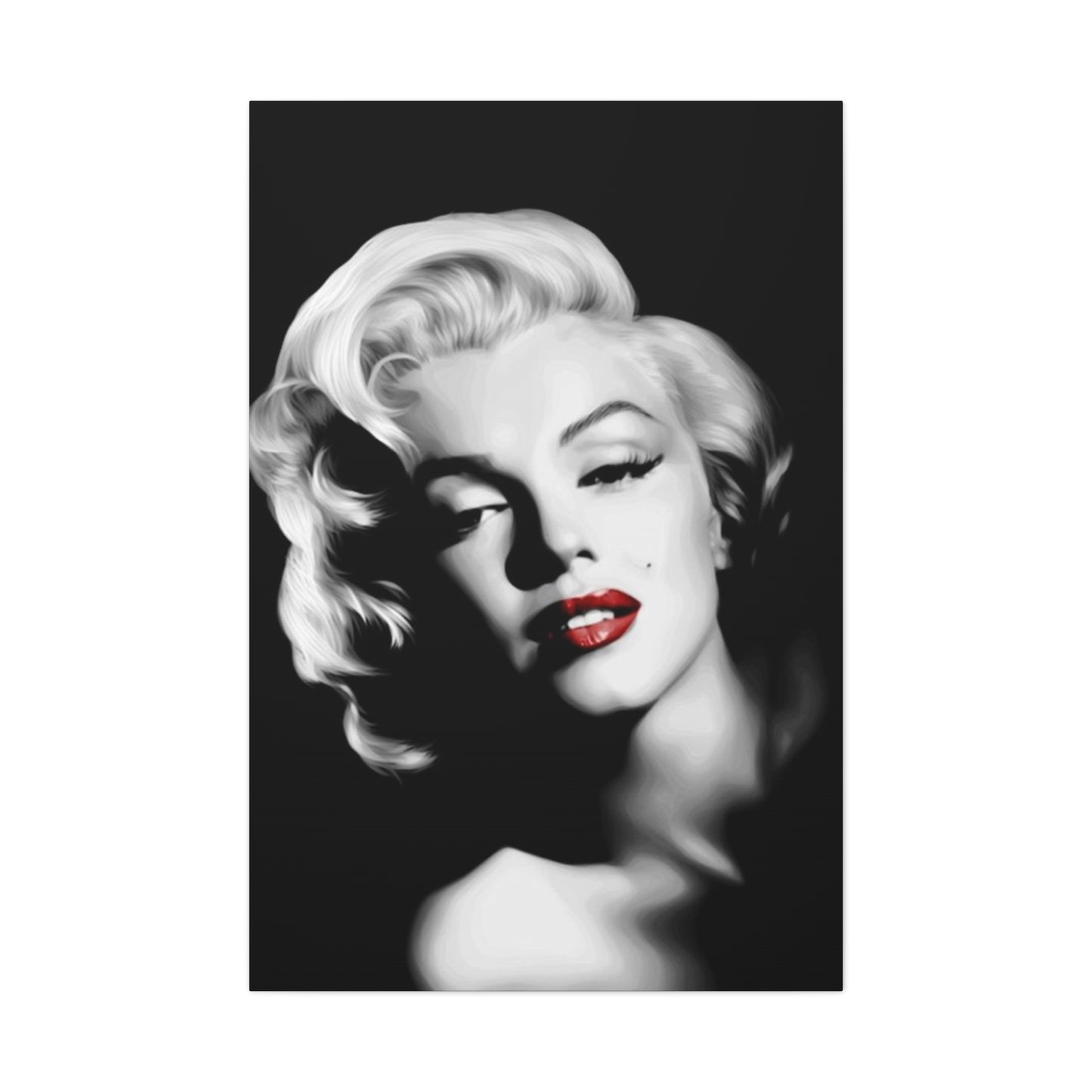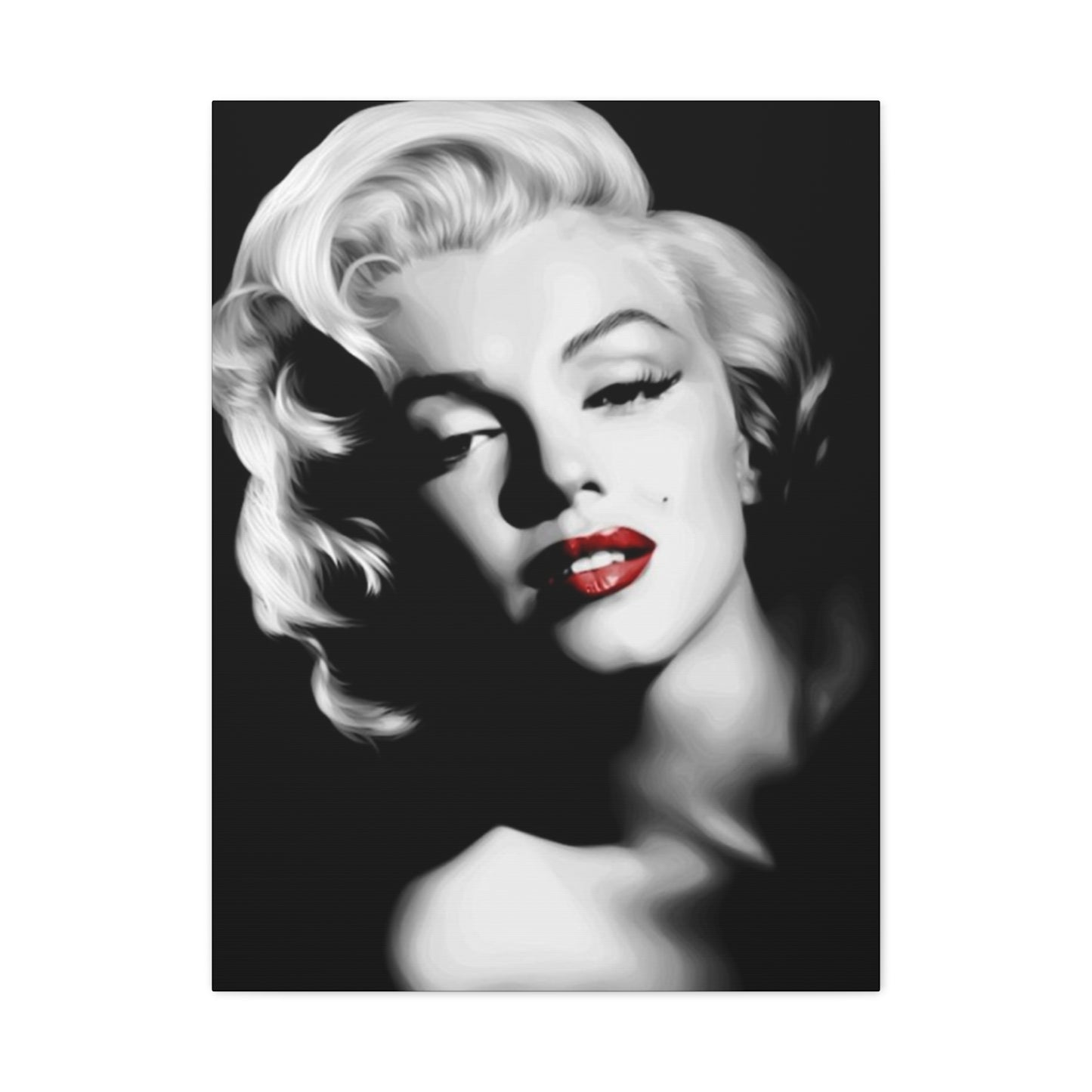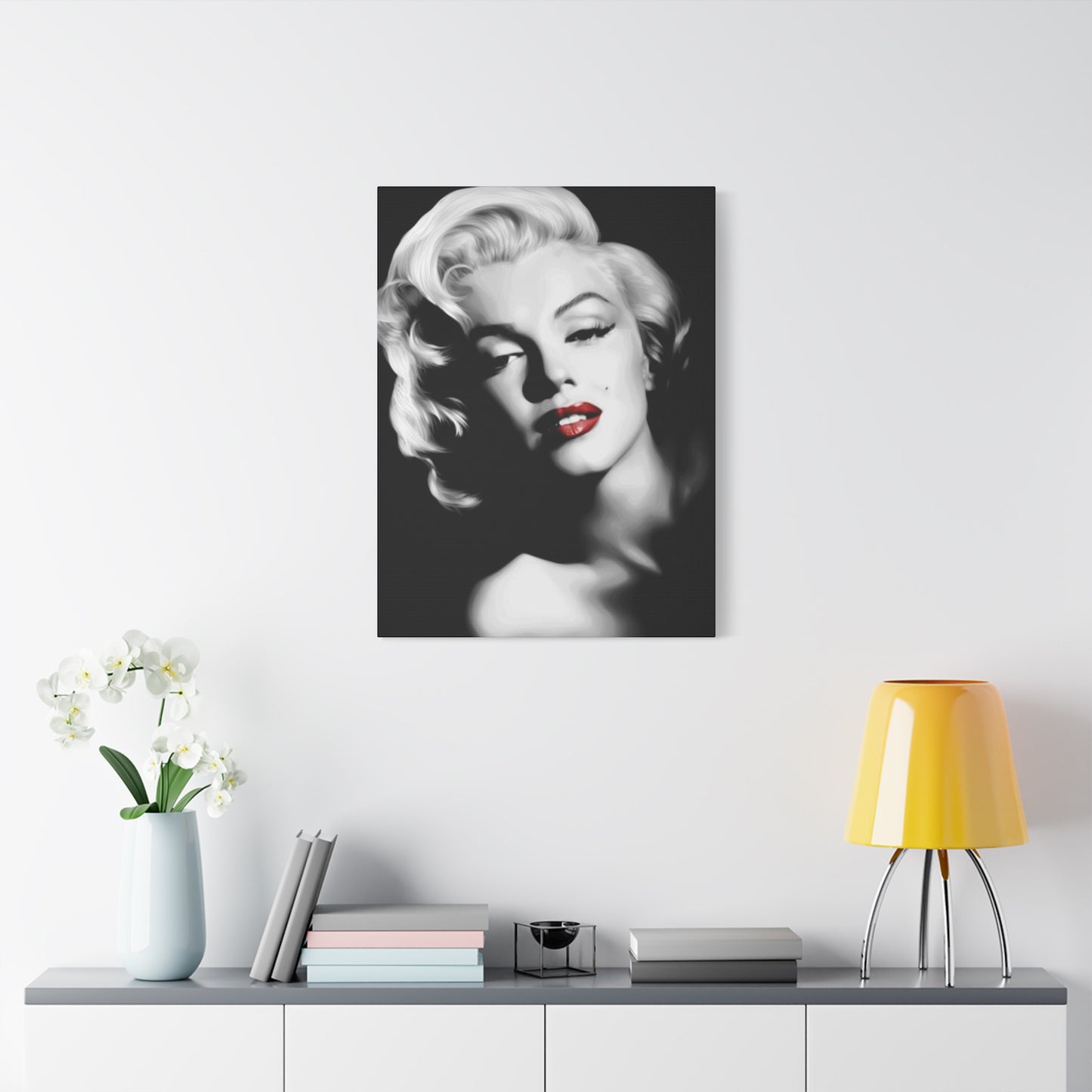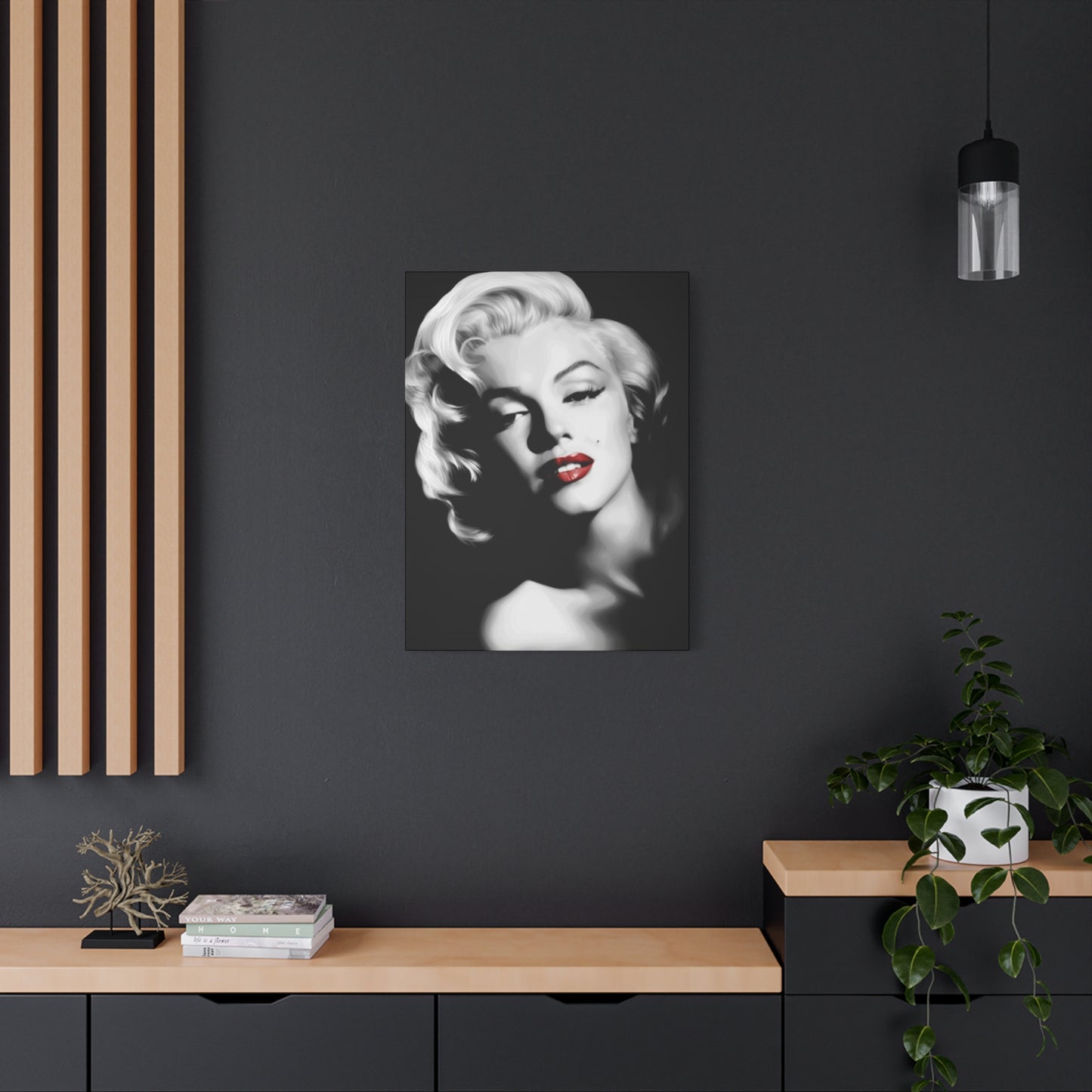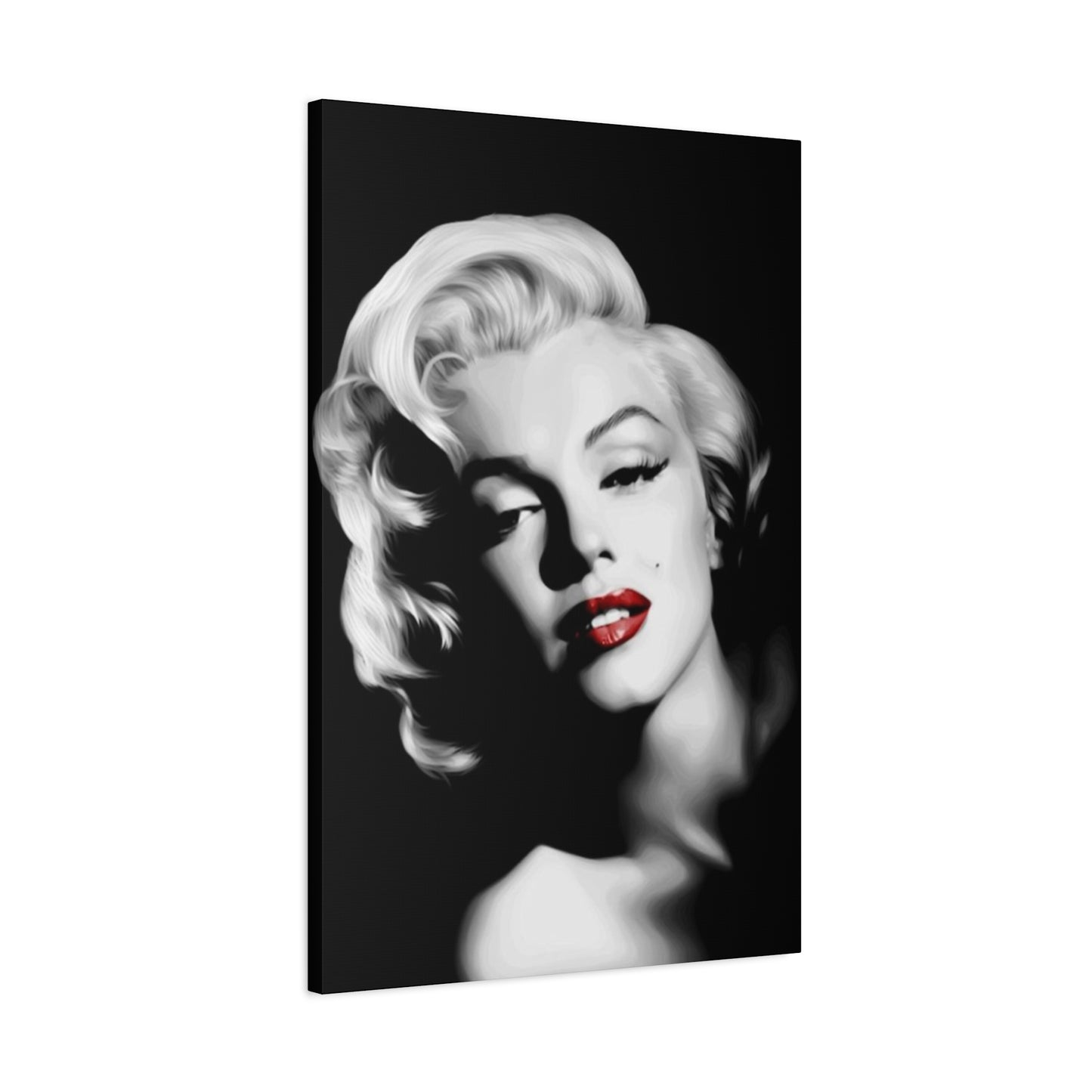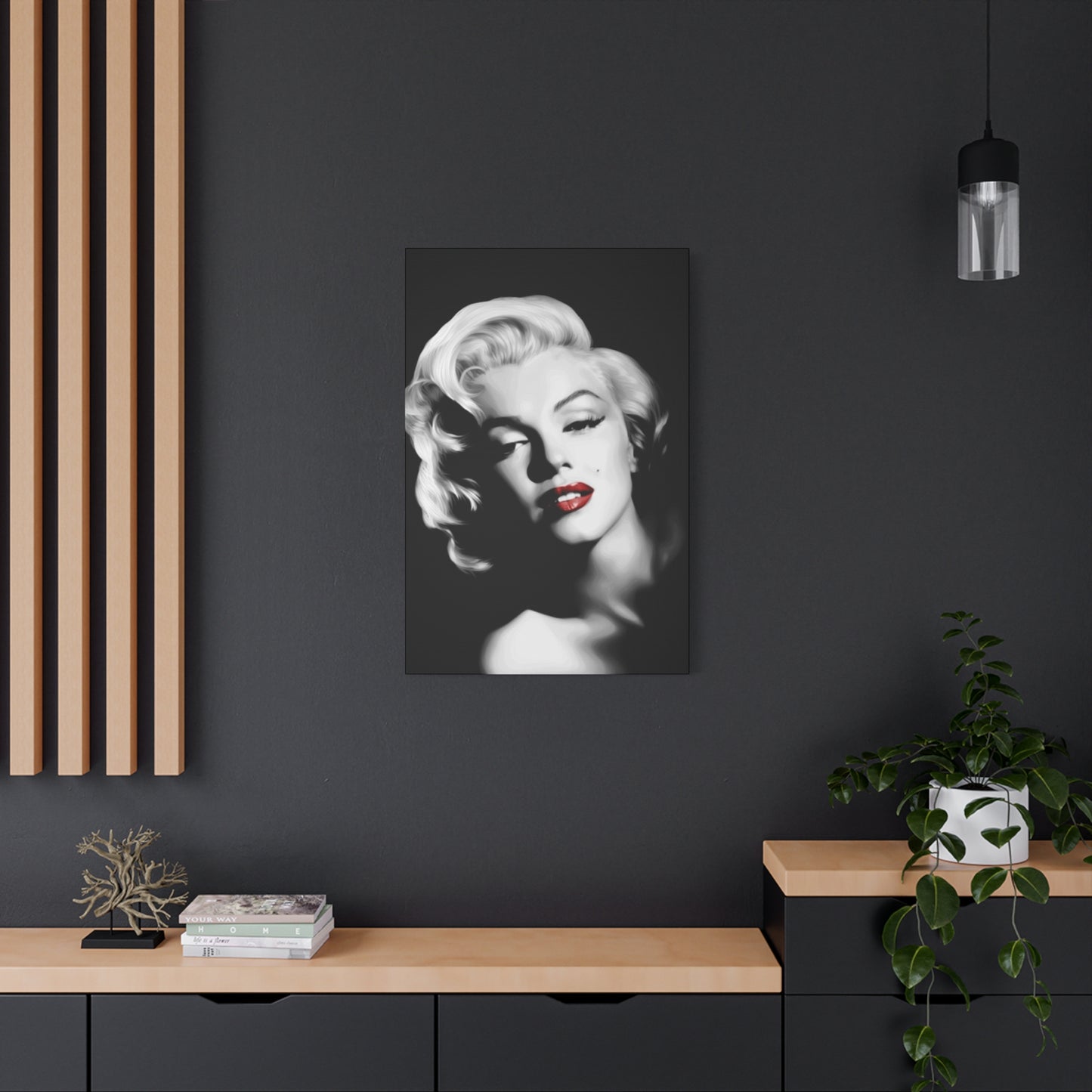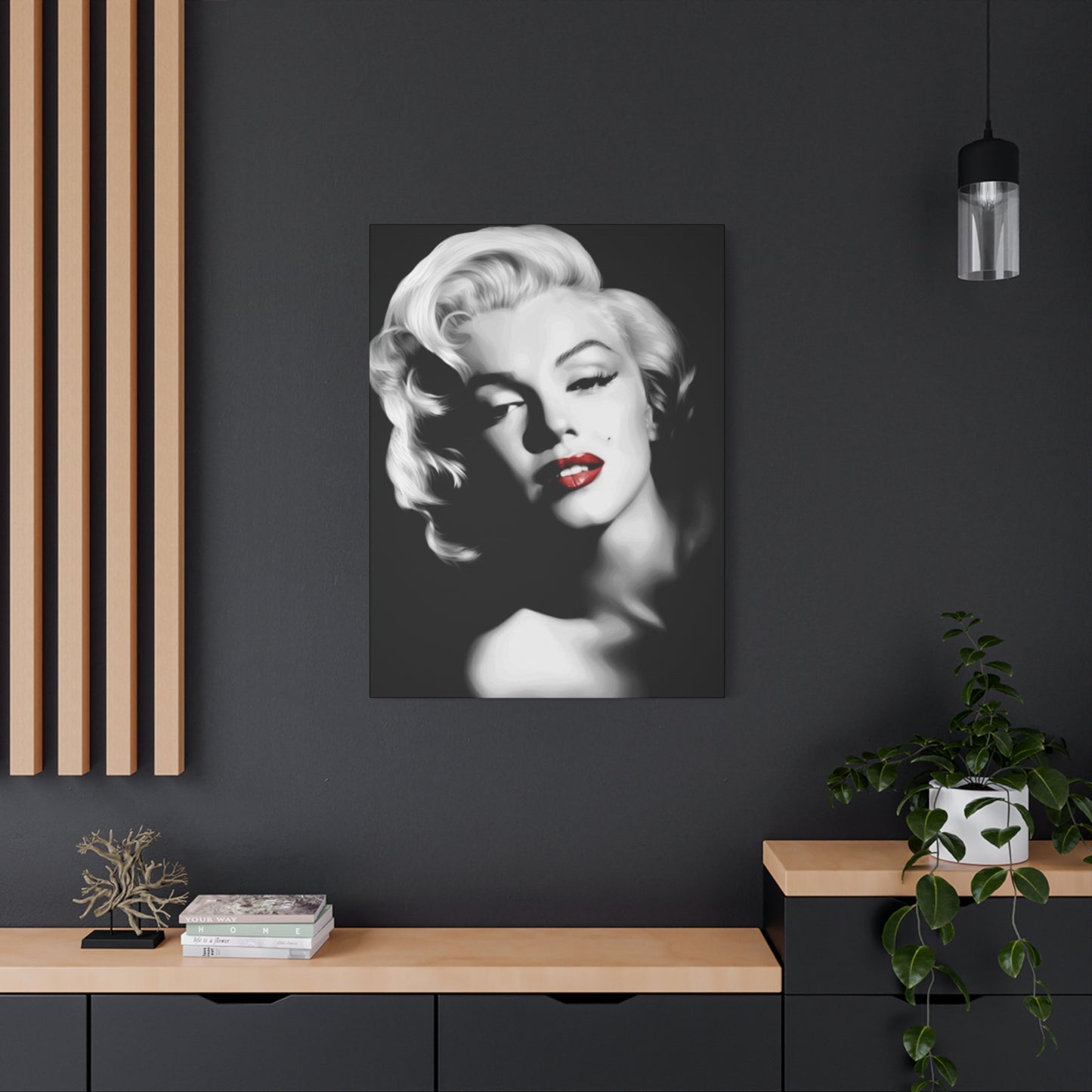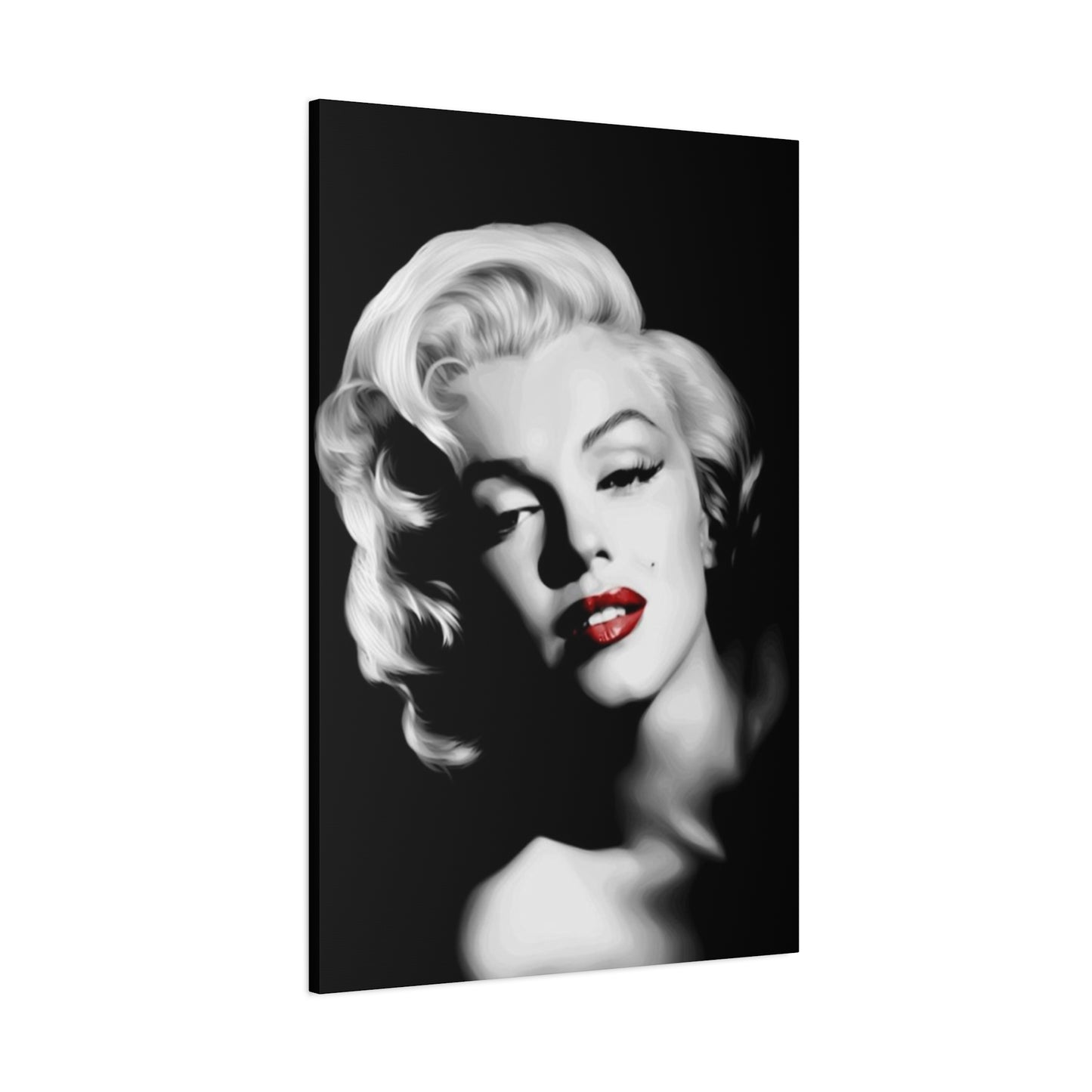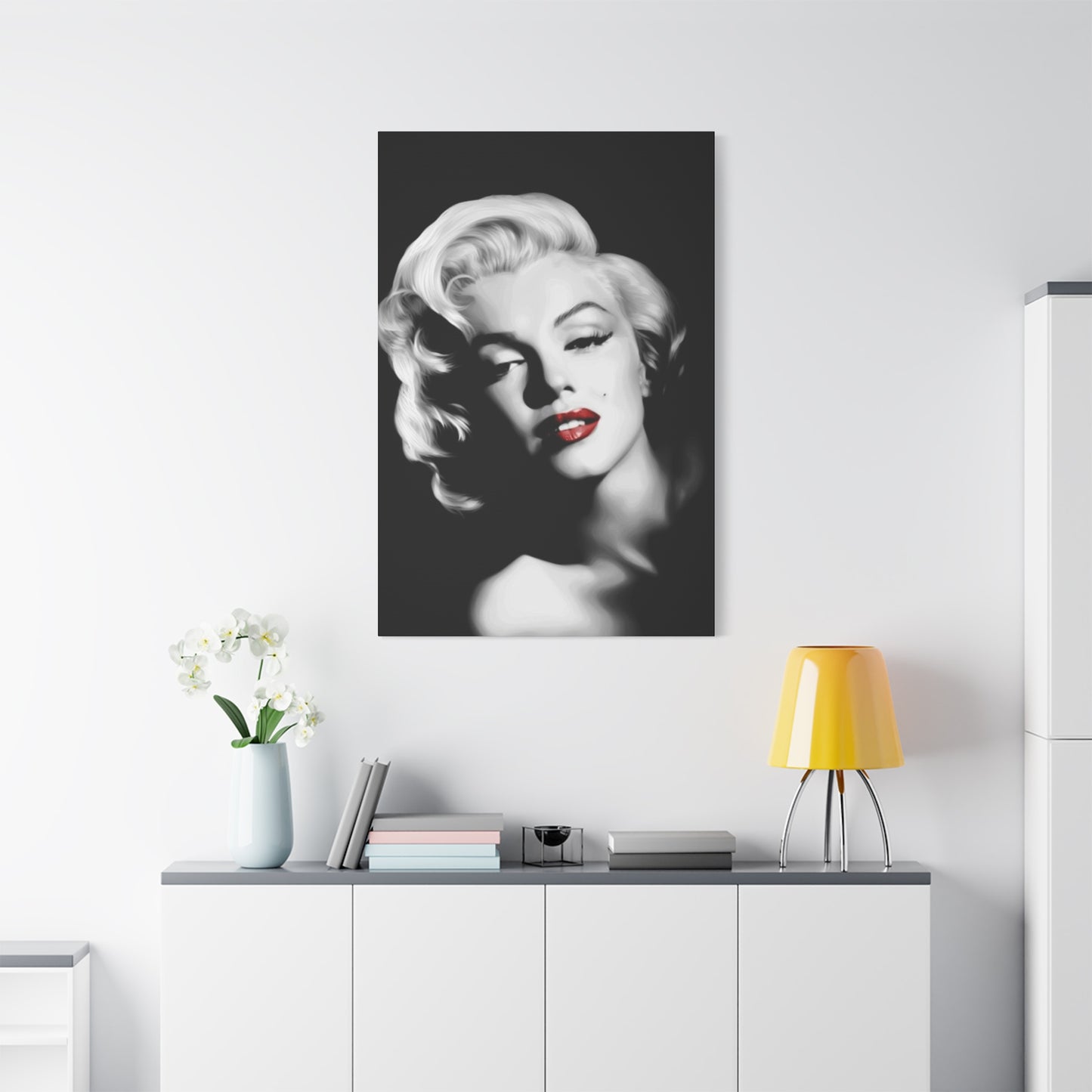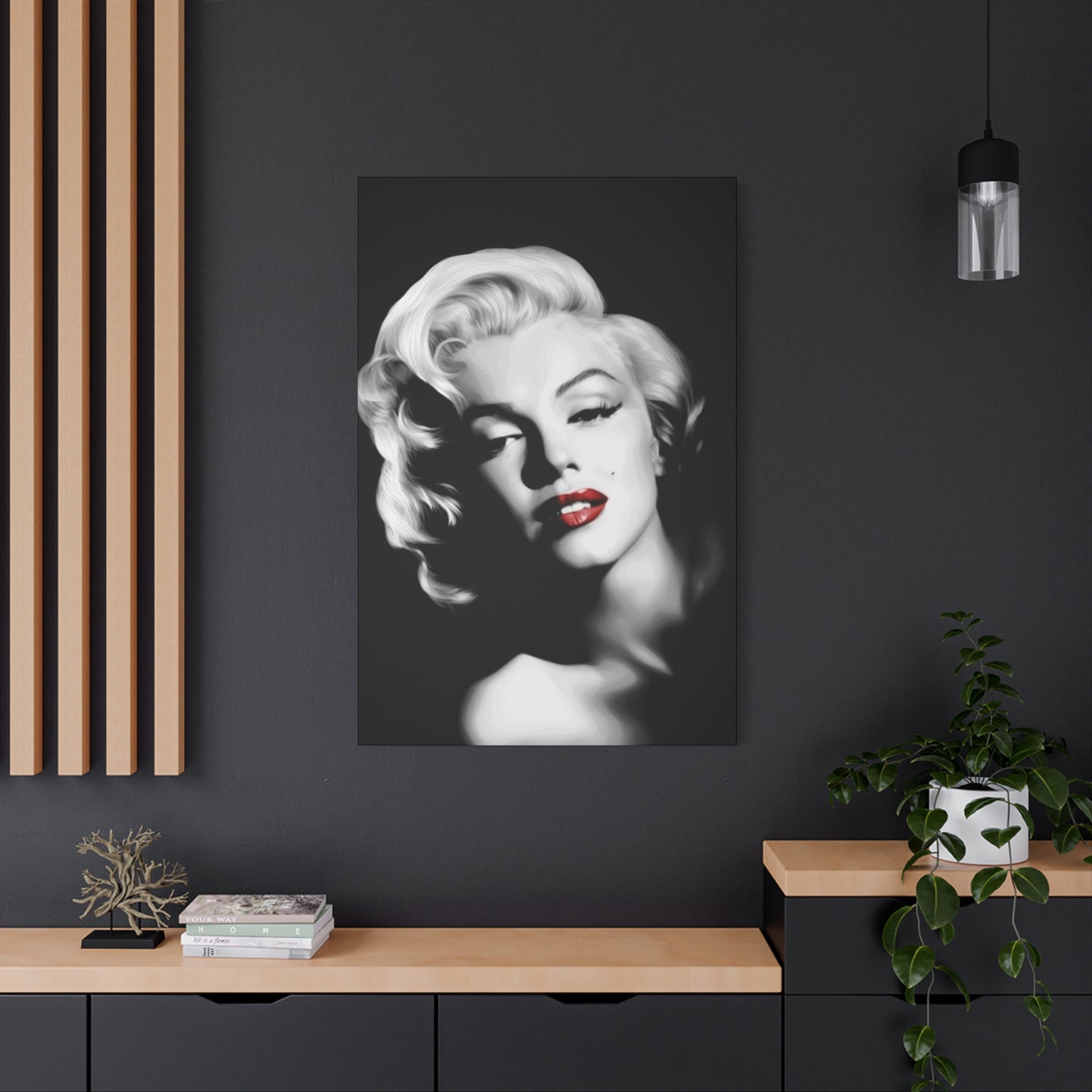Marilyn Monroe Hidden Photo Wall Art: Discover Rare and Forgotten Images
The mystique surrounding Marilyn Monroe continues to captivate audiences decades after her untimely passing. Beyond the well-known publicity shots and movie stills that have become cultural touchstones, there exists a treasure trove of forgotten photographs that offer intimate glimpses into the life of Hollywood's most enigmatic star. These lost images reveal layers of complexity beneath the carefully crafted public persona, showcasing moments of vulnerability, spontaneity, and raw humanity that were rarely captured for public consumption.
The photographic legacy of Marilyn Monroe extends far beyond the glamorous studio portraits that made her an international icon. Hidden in private collections, forgotten archives, and dusty storage rooms across the globe, hundreds of photographs remain largely unseen by the public. These images document everything from candid behind-the-scenes moments during film productions to private gatherings with friends and colleagues, offering a more complete picture of the woman behind the legend.
Photography played a crucial role in creating and maintaining Monroe's image throughout her career. From her early days as Norma Jeane Dougherty posing for amateur photographers to her final professional shoots, the camera became both her greatest ally and most persistent observer. The lost photographs represent moments when the carefully constructed facade slipped away, revealing glimpses of authenticity that commercial photography rarely captured.
Discovering Marilyn: The Lost Photographs
The journey to uncover Marilyn Monroe's lost photographs begins with understanding the complex network of photographers, studios, and private collectors who worked with or encountered the star throughout her career. Many of these forgotten images were never intended for public release, existing instead as personal mementos, test shots, or experimental artistic endeavors that captured Monroe in unguarded moments.
Estate sales, auction houses, and private collections have yielded remarkable discoveries over the years. Photography enthusiasts and Monroe scholars have dedicated countless hours to tracking down these elusive images, often finding them in the most unexpected places. Former studio employees, family members of photographers, and even casual acquaintances have emerged with photographs that had been stored away for decades, forgotten until renewed interest in Monroe's legacy brought them to light.
The process of authentication presents unique challenges when dealing with previously unknown Monroe photographs. Experts must carefully examine everything from the photographic paper and printing techniques to the clothing, hairstyles, and settings depicted in the images. Advanced digital analysis techniques have become invaluable tools in determining the authenticity and approximate dating of these discoveries.
Private collectors play a significant role in preserving these lost treasures. Many wealthy enthusiasts have spent considerable sums acquiring rare Monroe photographs, sometimes keeping them private for years before making them available to researchers or the public. These collections often contain multiple unpublished images from single photo sessions, providing comprehensive documentation of specific moments in Monroe's life and career.
The discovery process often involves extensive detective work, tracing the provenance of individual photographs through multiple owners and decades of storage. Photography archives maintained by major studios, newspapers, and magazines frequently yield surprises when thoroughly catalogued by dedicated researchers. Sometimes images thought to be lost forever resurface when collections are digitized or reorganized for preservation purposes.
Digital technology has revolutionized the search for lost Monroe photographs. Online databases, social media platforms, and digital auction sites have made it easier for collectors and researchers to share information about newly discovered images. This collaborative approach has led to the identification of previously unknown photographs and helped establish connections between disparate images from the same sessions or time periods.
The emotional impact of discovering a previously unknown Monroe photograph cannot be understated. Each new image adds another piece to the complex puzzle of her life, potentially revealing new insights into her personality, relationships, or state of mind during specific periods. These discoveries help humanize an icon who has often been reduced to a few iconic poses and expressions in popular culture.
Iconic Lost Photos of Marilyn Monroe
Among the most significant lost photographs of Marilyn Monroe are those that capture her during pivotal moments in her career and personal life. These images often provide context for well-known events or reveal previously unknown aspects of her experiences in Hollywood and beyond. The iconic status of these lost photos stems not from their public recognition but from their ability to illuminate new facets of Monroe's character and circumstances.
One category of lost photographs includes images from Monroe's early modeling days, before she became a household name. These pictures document her transformation from Norma Jeane into the carefully crafted Marilyn persona, showing the gradual evolution of her signature look and pose variations that would later become trademark elements of her public image. The raw potential visible in these early shots provides fascinating insight into how Monroe and her handlers developed her distinctive visual brand.
Behind-the-scenes photographs from movie sets represent another treasure trove of lost imagery. These candid shots capture Monroe interacting with directors, fellow actors, and crew members in moments of genuine emotion and spontaneity. Unlike the carefully controlled publicity stills released by studios, these images reveal the working actress beneath the glamorous exterior, showing her dedication to her craft and the challenges she faced in bringing her characters to life.
Private party photographs represent some of the most intriguing lost images in Monroe's photographic legacy. These informal shots document her social life and personal relationships, showing her in relaxed settings surrounded by friends, colleagues, and romantic interests. The spontaneous nature of these images often captures genuine expressions and interactions that were rarely visible in her professional photography.
Travel photographs comprise another significant category of lost Monroe imagery. These pictures document her trips to various locations for both professional and personal reasons, providing glimpses of her life outside the Hollywood bubble. Whether captured during promotional tours, vacation getaways, or location shoots, these images reveal her reactions to different environments and cultures.
Experimental artistic photographs represent perhaps the most intriguing category of lost Monroe imagery. These images were created by photographers who sought to capture something beyond the conventional glamour shots, experimenting with lighting, composition, and artistic techniques to create more complex and nuanced portraits. Many of these artistic endeavors remained unpublished because they didn't fit the commercial expectations of Monroe's public image.
Personal snapshot-style photographs taken by friends, family members, and romantic partners offer the most intimate glimpses into Monroe's private world. These informal images, often taken with basic cameras in everyday settings, show her without the elaborate makeup, styling, and lighting that characterized her professional photography. The unguarded nature of these shots provides rare insight into her personality and demeanor away from the public eye.
The significance of these lost photographs extends beyond their documentary value. They serve as important historical artifacts that help scholars and enthusiasts develop a more complete understanding of Monroe's life and times. Each image contributes to a larger narrative about Hollywood's golden age, the construction of celebrity identity, and the complex relationship between public personas and private realities.
Behind the Scenes: Marilyn's Lost Photographs
The world behind the camera during Monroe's era was vastly different from today's celebrity photography landscape. Studio systems maintained strict control over star images, and many photographs were taken but never used, filed away in archives that would later be forgotten or dispersed. These behind-the-scenes images offer unprecedented access to the machinery of image-making in Hollywood's golden age.
Candid photographs taken during film productions reveal the intensive collaborative process involved in creating Monroe's on-screen presence. These images document everything from costume fittings and makeup sessions to script readings and rehearsals, showing the meticulous preparation that went into each of her performances. The informal nature of these shots often captures her genuine reactions to direction, her interactions with fellow cast members, and moments of both triumph and frustration during the creative process.
Photography sessions themselves generated numerous outtakes and alternative shots that were never selected for publication. These lost images from professional shoots reveal the extensive process of creating the perfect Monroe photograph, showing multiple poses, expressions, and styling variations that were explored but ultimately rejected. The contact sheets and proof prints from these sessions provide fascinating insight into how her iconic images were selected and refined.
Wardrobe and makeup tests produced another category of lost photographs that document the careful construction of Monroe's visual identity. These technical images were primarily functional, designed to help cinematographers, costume designers, and makeup artists achieve the desired look for specific projects. However, they also capture Monroe in various stages of transformation, revealing the careful artistry involved in creating her signature appearance.
Location scouting and preparation photographs from Monroe's films occasionally captured her presence during pre-production activities. These informal documentary-style images show her exploring film sets, interacting with location managers, and participating in the planning process for her scenes. The casual nature of these shots provides rare glimpses of her professional engagement beyond her acting performances.
Publicity tour photographs represent another rich source of lost Monroe imagery. These images document her appearances at premieres, press conferences, interviews, and promotional events, often capturing unscripted moments between formal photo opportunities. The spontaneous interactions with fans, journalists, and industry figures revealed in these photographs provide valuable context for understanding her public persona and the demands of celebrity life.
Studio lot photographs taken during downtime between projects show Monroe navigating the daily routine of studio life. These images capture her in the commissary, walking between sound stages, meeting with agents and executives, and participating in the social aspects of Hollywood's community atmosphere. The informal nature of these shots reveals the more mundane aspects of her professional life that were rarely documented in official publicity materials.
Personal photography equipment and amateur shots taken by Monroe herself represent an intriguing category of lost images. Evidence suggests that she occasionally used cameras to document her own experiences, creating a personal visual diary that remained separate from her professional photography. These self-directed images offer unique perspectives on her world and interests, potentially revealing aspects of her personality that were filtered out of commercially produced photographs.
Hollywood Star Through Forgotten Lenses: Marilyn Monroe
The forgotten lenses through which Marilyn Monroe was captured reveal a multifaceted portrait of Hollywood stardom that differs significantly from the carefully curated public image most people remember. These alternative perspectives come from photographers who worked outside the mainstream studio system, amateur enthusiasts who encountered Monroe in unexpected contexts, and professional photographers who captured her during off-duty moments when her guard was down.
International photographers who encountered Monroe during her travels abroad created some of the most revealing lost photographs in her collection. These images document her interactions with foreign cultures, her reactions to different social customs, and her adaptation to environments far removed from Hollywood's familiar territory. The outsider perspectives of these international photographers often captured aspects of her personality that American photographers, familiar with her established image, might have overlooked.
Society photographers who documented high-profile events and private parties where Monroe was present created another category of forgotten imagery. These photographers were skilled at capturing candid moments during social gatherings, revealing Monroe's interactions with other celebrities, politicians, and cultural figures. Their images often show her in sophisticated social settings, demonstrating her ability to navigate elite circles with grace and intelligence.
Photojournalists who covered Monroe for news organizations occasionally captured images that went beyond their assigned editorial purposes. These photographers, trained to document events objectively, sometimes caught spontaneous moments that revealed genuine emotions and reactions. Their professional distance from the entertainment industry allowed them to approach Monroe without the preconceptions that might influence more specialized celebrity photographers.
Amateur photographers and fans who encountered Monroe in public settings created some of the most authentic lost images in her photographic legacy. These casual encounters, documented with basic cameras and minimal technical expertise, often captured her natural reactions to unexpected situations. The lack of professional lighting and staging in these amateur shots reveals aspects of her appearance and demeanor that were rarely visible in commercial photography.
Art photographers who worked with Monroe on experimental projects created some of the most intellectually ambitious lost images in her collection. These artists approached her as a subject for serious artistic exploration rather than commercial exploitation, resulting in photographs that emphasized mood, symbolism, and creative interpretation over conventional glamour. Many of these artistic collaborations remained unpublished because they challenged conventional expectations of celebrity photography.
Documentary photographers who encountered Monroe during various projects and events created images that emphasized context over individual portraiture. These photographs show her as part of larger social and cultural narratives, documenting her participation in charitable events, political gatherings, and cultural celebrations. The documentary approach of these photographers often captured the broader social significance of her celebrity status.
Technical and scientific photographers who worked with Monroe for specialized purposes created another category of forgotten imagery. These photographs were often taken for practical reasons related to film production, costume design, or medical documentation, but they also reveal unique perspectives on her physical presence and professional preparation. The technical nature of these images often emphasized details that were invisible in conventional glamour photography.
Rare Marilyn Monroe Photos You Haven't Seen
The rarity of certain Monroe photographs stems from various factors including limited original distribution, private ownership, restrictive estate management, and simple oversight in cataloguing and preservation efforts. These rare images often surface unexpectedly, creating excitement among collectors and researchers who recognize their significance in completing the visual record of Monroe's life and career.
Family photographs taken during Monroe's childhood and adolescence represent some of the rarest images in her photographic legacy. These personal snapshots, held by relatives and family friends, document her development from a young girl into the woman who would become a global icon. The intimate nature of these family photographs provides crucial context for understanding the personal experiences that shaped her later public persona.
School and community photographs from Monroe's early years occasionally surface in local archives and personal collections. These images document her participation in school activities, community events, and amateur theatrical productions before she entered the entertainment industry. The historical significance of these photographs lies in their documentation of her early interest in performance and her development within her community context.
Military base photographs from Monroe's USO performances and troop visits represent another category of rare imagery. These pictures document her dedication to entertaining American servicemen and her genuine emotional connection to military personnel. The informal nature of many military base photographs captured authentic moments of interaction between Monroe and service members, revealing her patriotic commitment and personal warmth.
Private modeling session photographs from Monroe's early career represent some of the most sought-after rare images among collectors. These pictures document her work with photographers who were developing their own artistic visions while helping her refine her modeling techniques. The experimental nature of many of these sessions resulted in unique images that explored different aspects of her visual potential.
Medical and therapeutic photography represents a rarely discussed category of Monroe imagery. These photographs were taken for various health-related purposes throughout her career and provide insight into the physical and emotional challenges she faced. The sensitive nature of these images has led to their careful preservation and limited public access, making them extremely rare when they do surface.
Legal documentation photographs taken for various court proceedings and business transactions represent another category of rare Monroe imagery. These formal photographs were created for official purposes and often capture her during stressful or significant moments in her personal and professional life. The legal context of these images provides unique insight into the business and personal challenges she navigated throughout her career.
Rehearsal and preparation photographs from theatrical productions and television appearances represent rare documentation of Monroe's work in live performance contexts. These images capture her preparation process for non-film projects, revealing her versatility as a performer and her approach to different types of entertainment venues. The limited nature of her live performance work makes these photographs particularly valuable for understanding the full scope of her artistic abilities.
Personal artwork and creative project photographs document Monroe's own artistic endeavors and creative interests outside of her entertainment career. These images reveal her involvement in painting, writing, and other creative pursuits that were largely kept private during her lifetime. The personal nature of these creative expressions makes photographs documenting them extremely rare and valuable for understanding her inner life and intellectual interests.
Exploring Marilyn: Lost Photographs of a Legend
The exploration of Monroe's lost photographs requires a systematic approach that combines historical research, technical analysis, and cultural interpretation. Each newly discovered image must be carefully examined not only for its authenticity and provenance but also for its contribution to our understanding of Monroe's complex personality and the social context of her era.
Archival research represents the foundation of efforts to locate lost Monroe photographs. Researchers must navigate complex networks of estate records, studio archives, newspaper morgues, and private collections to identify potential sources of undiscovered imagery. This detective work often involves following paper trails that span decades and cross international boundaries, requiring persistence and expertise in historical research methods.
Digital restoration techniques have revolutionized the process of recovering and preserving lost Monroe photographs. Advanced scanning technologies can reveal details in damaged or deteriorated images that were previously invisible, while computer-based restoration methods can repair age-related damage and enhance image quality without compromising historical accuracy. These technical capabilities have made it possible to recover valuable images that might otherwise have been considered beyond salvation.
Contextual analysis of lost photographs involves placing newly discovered images within the broader narrative of Monroe's life and career. Researchers must identify the circumstances surrounding each photograph's creation, including the date, location, photographer, and purpose of the session. This contextual information helps establish the significance of individual images and their relationship to known events and relationships in Monroe's life.
Comparative analysis with known Monroe photographs helps establish authenticity and dating for newly discovered images. Experts examine everything from clothing and hairstyles to makeup techniques and photographic equipment used to create each image. Consistency with established patterns in Monroe's appearance and the technical characteristics of photography from specific time periods provides important evidence for authentication purposes.
Cultural interpretation of lost photographs involves analyzing their significance within the broader context of American culture and Hollywood history. Each image contributes to our understanding of celebrity culture, gender roles, artistic expression, and social values during Monroe's era. This interpretive work helps establish the broader historical and cultural importance of individual photographs beyond their value as Monroe memorabilia.
Collaborative research efforts have become increasingly important in the exploration of lost Monroe photographs. Scholars, collectors, photographers, and enthusiasts share information and resources to maximize the potential for discoveries and ensure that newly found images receive appropriate analysis and preservation. These collaborative networks have proven essential for tracking down rare images and establishing their authenticity.
Public exhibition and publication of lost Monroe photographs serves multiple purposes including education, preservation, and cultural engagement. Museums, galleries, and publishers work with researchers and collectors to make newly discovered images accessible to broader audiences while ensuring their proper preservation and contextualization. These public presentations help maintain interest in Monroe's legacy while contributing to scholarly understanding of her life and times.
Legal and ethical considerations play important roles in the exploration of lost Monroe photographs. Issues of copyright ownership, privacy rights, and estate permissions must be carefully navigated when dealing with previously unpublished images. Researchers and collectors must balance the historical and cultural value of making rare photographs public with respect for legal restrictions and ethical considerations regarding Monroe's memory and legacy.
Vintage Hollywood: Marilyn Monroe's Hidden Moments
The hidden moments of Marilyn Monroe's life in vintage Hollywood reveal a more complex and nuanced portrait of celebrity existence during the studio system era. These private glimpses behind the carefully constructed public facade show Monroe navigating the unique social, professional, and personal challenges of being a major star in an industry that demanded both tremendous public visibility and strict personal control.
Studio social life provided numerous opportunities for candid photography that documented Monroe's interactions with colleagues, executives, and industry figures in relaxed settings. These informal gatherings, often held in executive offices, commissary spaces, or private clubs, were frequently photographed by amateur enthusiasts or staff members who wanted to document their proximity to stardom. The casual nature of these social interactions often revealed Monroe's natural personality and her ability to connect with people across different levels of the entertainment hierarchy.
Personal relationship documentation through photography reveals Monroe's complex romantic and social connections within Hollywood's elite circles. Private photographers and amateur enthusiasts captured her interactions with various romantic partners, close friends, and mentors, providing insight into the personal relationships that supported and challenged her throughout her career. These intimate photographs often show her in unguarded moments of genuine affection, vulnerability, and human connection.
Domestic life photography documents Monroe's attempts to create private spaces and personal routines away from the constant attention of her public career. Images of her in home settings, engaging in everyday activities like reading, cooking, or relaxing, provide rare glimpses of the woman behind the celebrity persona. These domestic photographs reveal her efforts to maintain some semblance of normal life despite the extraordinary circumstances of her fame.
Cultural event photography shows Monroe's participation in the broader artistic and intellectual life of Hollywood and Los Angeles. Her attendance at gallery openings, theater productions, literary events, and cultural celebrations was occasionally documented by photographers who captured her genuine interest in creative expression beyond her own entertainment career. These images reveal her intellectual curiosity and cultural sophistication.
Health and wellness documentation through photography reveals Monroe's ongoing struggles with physical and emotional challenges throughout her career. Images from spa visits, therapeutic sessions, and medical appointments provide insight into the tremendous pressure she faced and her efforts to maintain her health and emotional stability. The sensitive nature of these photographs makes them particularly rare and valuable for understanding the personal costs of her celebrity status.
Travel and vacation photography documents Monroe's efforts to escape the pressures of Hollywood life through trips to various domestic and international destinations. These images capture her in relaxed settings away from work obligations, often showing her genuine enjoyment of new environments and experiences. The informal nature of travel photography often revealed aspects of her personality that were suppressed in more formal professional contexts.
Creative collaboration photography documents Monroe's work with various artists, writers, musicians, and other creative professionals on projects that extended beyond her film career. These images show her engagement with serious artistic endeavors and her efforts to expand her creative horizons. The collaborative nature of these projects often brought out aspects of her intelligence and artistic sensibility that were not always visible in her commercial work.
Community involvement photography reveals Monroe's participation in charitable activities, political events, and social causes that were important to her personally. These images document her genuine commitment to various social and political issues, showing her engagement with the world beyond entertainment. The authentic nature of her involvement in these activities often produced photographs that captured her most sincere and purposeful expressions.
The Story Behind Marilyn's Lost Photographs
Every lost photograph of Marilyn Monroe carries its own unique story of creation, preservation, and rediscovery. These narratives reveal not only the circumstances under which the images were taken but also the complex web of relationships, motivations, and historical forces that led to their initial obscurity and eventual emergence from decades of hiding.
The photographers behind these lost images represent a diverse group of professionals, amateurs, and artistic visionaries who encountered Monroe under various circumstances. Studio photographers working under contract often took hundreds of images during single sessions, with only a small percentage selected for publication or promotional use. The rejected images, stored in archives or given to the photographers as personal mementos, often contained some of the most revealing and authentic portrayals of Monroe's personality and character.
Personal photographers who worked with Monroe on private projects created some of the most intimate and revealing lost images in her photographic legacy. These individuals often developed close relationships with Monroe, allowing them access to her private world and emotional life. Their photographs frequently captured moments of vulnerability, introspection, and genuine emotion that were rarely visible in commercial photography designed for public consumption.
The preservation of these lost photographs often depended on the dedication and foresight of individuals who recognized their historical value even when they had little commercial worth. Photography assistants, studio employees, friends, and family members who saved seemingly insignificant images often unknowingly preserved important historical documents that would later provide crucial insight into Monroe's life and times.
Storage and archival conditions played crucial roles in determining which photographs survived and which were lost forever. Images stored in professional archives with proper climate control and preservation techniques were more likely to survive in good condition, while photographs kept in personal collections under less optimal conditions often suffered damage from age, humidity, and poor handling. The random nature of survival has meant that some of the most significant lost photographs exist today only in damaged or deteriorated condition.
Authentication stories reveal the complex process of verifying the legitimacy of newly discovered Monroe photographs. Experts must examine everything from the photographic paper and printing techniques to the historical accuracy of clothing, hairstyles, and settings depicted in the images. Advanced scientific analysis techniques, including digital enhancement and chemical testing, have become essential tools for separating authentic historical documents from modern reproductions or manipulated images.
Discovery circumstances often involve elements of chance, persistence, and expertise coming together in unexpected ways. Estate sales, auction houses, antique shops, and private collections have all yielded significant Monroe photographs that had been forgotten or misidentified for decades. The stories of these discoveries often involve dedicated researchers, knowledgeable collectors, or simply fortunate individuals who recognized the significance of images that had been overlooked by others.
Market forces and collector interest have played significant roles in the emergence of lost Monroe photographs. The enduring fascination with Monroe's life and legacy has created a market for rare and previously unknown images, incentivizing collectors and dealers to search their holdings for any Monroe-related material. This economic motivation has led to the discovery of numerous photographs that might otherwise have remained hidden indefinitely.
Legal complications surrounding estate rights, copyright ownership, and privacy concerns have influenced which lost photographs have been made public and which remain hidden in private collections. The complex legal landscape surrounding Monroe's image and legacy has created situations where significant photographs remain inaccessible to researchers and the public despite their clear historical value. Navigating these legal challenges often requires extensive negotiations and compromises among various interested parties.
Capturing Marilyn: Rare and Unseen Images
The art of capturing Marilyn Monroe in photographs involved much more than simply pointing a camera in her direction. The most successful images, whether widely published or hidden away as lost treasures, resulted from complex interactions between photographer and subject that revealed different aspects of her multifaceted personality and the cultural moment she embodied.
Technical innovations in photography during Monroe's era created new possibilities for capturing her image in previously impossible ways. Advances in film sensitivity, lighting equipment, and camera technology allowed photographers to work in lower light conditions, capture movement more effectively, and achieve more natural-looking portraits. These technical capabilities opened up new artistic possibilities that some photographers explored in experimental sessions with Monroe that remained largely unpublished.
Artistic vision played a crucial role in determining which Monroe photographs transcended mere documentation to become powerful artistic statements. Photographers who approached her as a serious artistic subject rather than simply a commercial commodity often created the most compelling and revealing images. These artistic collaborations, many of which remained private or were published only in limited editions, represent some of the most sophisticated lost photography in Monroe's visual legacy.
Location photography outside traditional studio settings produced some of the most naturalistic and revealing images of Monroe. Photographers who worked with her in outdoor locations, private residences, and everyday environments often captured aspects of her personality that were difficult to achieve in formal studio settings. The relaxed atmosphere and natural lighting conditions of these alternative locations frequently brought out more authentic expressions and poses.
Experimental lighting techniques used by innovative photographers created dramatic and emotionally powerful Monroe portraits that differed significantly from standard glamour photography. These lighting experiments, often conducted during private sessions or as personal artistic projects, explored mood, shadow, and atmospheric effects that revealed different emotional and psychological dimensions of Monroe's presence and personality.
Collaborative creative processes between Monroe and her photographers produced some of the most intellectually ambitious and artistically sophisticated images in her photographic legacy. These collaborations, which often involved extensive planning and multiple shooting sessions, explored themes and concepts that went far beyond conventional celebrity portraiture. The intellectual engagement required for these projects often brought out aspects of Monroe's intelligence and creativity that were rarely visible in commercial photography.
Spontaneous photography captured during unplanned encounters and informal situations often produced the most genuine and revealing images of Monroe. Photographers who happened to encounter her during everyday activities, social gatherings, or travel situations sometimes captured moments of authenticity that were impossible to achieve in formal portrait sessions. These spontaneous images often revealed her natural personality and emotional responses without the filtering effects of professional styling and posing.
Documentary-style photography approached Monroe as part of larger social and cultural narratives rather than focusing exclusively on her individual celebrity status. Photographers who documented her participation in various events, causes, and social situations created images that emphasized her role within broader historical contexts. These documentary approaches often captured her interactions with other people and her responses to different social situations.
Intimate portraiture created during private sessions with trusted photographers produced some of the most emotionally revealing and personally significant images in Monroe's photographic legacy. These intimate photographs, often taken in private residences or personal settings, captured moments of vulnerability, reflection, and genuine emotion that were rarely visible in public photography. The trust required for these intimate sessions often resulted in images that revealed aspects of Monroe's inner life and emotional complexity.
Marilyn Monroe's Lost Photographs
The timeless quality of Marilyn Monroe's lost photographs stems from their ability to capture universal human experiences within the specific context of Hollywood's golden age. These images transcend their historical moment to speak to contemporary audiences about themes of beauty, vulnerability, ambition, and the complex relationship between public persona and private reality that remain relevant in today's celebrity-obsessed culture.
Aesthetic innovation in Monroe photography often pushed the boundaries of conventional glamour imaging to create more complex and sophisticated visual statements. Photographers working with Monroe experimented with composition, lighting, and styling techniques that challenged traditional approaches to celebrity portraiture. These innovative approaches, often too experimental for commercial publication at the time, have gained recognition for their artistic merit and influence on subsequent photography trends.
Cultural significance of Monroe's lost photographs extends beyond their value as historical documentation to encompass their role in broader discussions about gender, sexuality, power, and celebrity in American culture. These images serve as primary source material for scholars studying the construction of feminine identity in mid-twentieth century America and the relationship between media representation and social reality.
Emotional resonance in Monroe's lost photographs often derives from their ability to capture moments of genuine human feeling that transcend the artificial constructions of celebrity photography. Images that show her experiencing joy, sadness, contemplation, or vulnerability connect with viewers on a fundamental human level that goes beyond mere celebrity fascination. This emotional authenticity helps explain the enduring appeal of Monroe's image across multiple generations.
Artistic legacy of Monroe's lost photographs includes their influence on subsequent generations of photographers, artists, and cultural creators who have drawn inspiration from their aesthetic innovation and emotional depth. Many contemporary artists have created works that reference or respond to Monroe's photographic legacy, demonstrating the continuing relevance and influence of these images in contemporary culture.
Historical documentation provided by Monroe's lost photographs offers invaluable insight into the social, cultural, and artistic conditions of Hollywood during the studio system era. These images serve as primary source material for historians studying American culture, gender roles, entertainment industry practices, and artistic expression during a pivotal period in American history.
Technical excellence demonstrated in many of Monroe's lost photographs showcases the skill and artistry of photographers working during the height of film-based photography. The craftsmanship evident in these images, from lighting and composition to printing and presentation, represents some of the finest examples of mid-twentieth century portrait photography and continues to serve as a standard for contemporary photographers.
Psychological insight offered by Monroe's lost photographs provides unique windows into the complex personality and emotional life of one of America's most fascinating cultural figures. These images often capture subtle expressions, gestures, and poses that reveal aspects of her psychological state and personality that were rarely visible in her more controlled public appearances.
Social commentary embedded within Monroe's lost photographs reflects the broader cultural conversations and social tensions of their era while remaining relevant to contemporary discussions about celebrity, media representation, and the construction of public identity. These images serve as both historical documents and contemporary commentary on the persistent themes and challenges of American celebrity culture.
Conclusion
The exploration of Marilyn Monroe's lost photographs reveals a rich and complex visual legacy that extends far beyond the iconic images most people associate with the legendary star. These forgotten treasures, hidden in private collections, archives, and storage rooms around the world, offer unprecedented insight into the woman behind the carefully constructed public persona that captivated millions of fans and continues to fascinate new generations of admirers.
The significance of these lost photographs lies not merely in their rarity or monetary value, but in their ability to humanize an icon who has often been reduced to a handful of famous poses and expressions. Through candid behind-the-scenes shots, intimate personal moments, experimental artistic collaborations, and spontaneous encounters, these images reveal the depth, complexity, and authenticity of Monroe's personality that commercial photography rarely captured. They show us a woman who was simultaneously vulnerable and strong, intellectual and intuitive, private and public, struggling to maintain her humanity while navigating the extraordinary pressures of international stardom.
The process of discovering, authenticating, and preserving these lost photographs represents a collaborative effort involving researchers, collectors, archivists, and Monroe enthusiasts around the world. Advanced digital technologies have revolutionized both the search for these hidden treasures and the methods used to restore and preserve them for future generations. This technological progress, combined with increased scholarly interest in Monroe's life and legacy, has led to a steady stream of discoveries that continue to expand our understanding of her experiences and impact.
The artistic merit of many lost Monroe photographs demonstrates that her collaborations with photographers often transcended commercial celebrity portraiture to achieve genuine artistic significance. Experimental lighting techniques, innovative compositions, and creative concepts explored in these private sessions reveal both Monroe's willingness to participate in serious artistic endeavors and the sophisticated artistic vision of photographers who saw her as more than just a commercial subject. These artistic collaborations produced images that continue to influence contemporary photography and visual culture.
The historical value of Monroe's lost photographs extends beyond their documentation of individual celebrity life to encompass their role as primary source material for understanding American culture, Hollywood history, and social conditions during the mid-twentieth century. These images provide invaluable insight into gender roles, celebrity culture, artistic expression, and social dynamics during a pivotal period in American history. They serve as windows into a world that has largely disappeared, offering contemporary viewers access to the authentic atmosphere and social context of Hollywood's golden age.
The emotional impact of these lost photographs derives from their ability to capture genuine human moments that resonate across time and cultural boundaries. Whether showing Monroe in moments of joy, vulnerability, contemplation, or creativity, these images connect with viewers on a fundamental human level that transcends celebrity fascination. They remind us that beneath the glamorous exterior was a real person experiencing the full range of human emotions and challenges that define the human experience.
The ongoing discovery and study of Monroe's lost photographs ensures that her legacy continues to evolve and deepen with time. Each newly uncovered image has the potential to reveal new aspects of her personality, relationships, or experiences that were previously unknown. This continuing process of discovery keeps Monroe's memory alive in meaningful ways while contributing to scholarly understanding of her life, times, and enduring cultural significance.
The preservation challenges facing Monroe's photographic legacy highlight the importance of proper archival practices and the fragility of photographic materials. Many significant images have been lost forever due to poor storage conditions, neglect, or simple ignorance of their historical value. The successful preservation of surviving photographs requires ongoing commitment from institutions, collectors, and researchers who recognize their cultural importance and are dedicated to ensuring their survival for future generations.
The legal and ethical considerations surrounding Monroe's lost photographs reflect broader questions about privacy, copyright, and the rights of deceased celebrities that remain relevant in contemporary discussions about digital media, celebrity culture, and historical preservation. Navigating these complex issues requires careful balance between public interest in historical documentation and respect for individual privacy and legal rights.
As we continue to discover and study Marilyn Monroe's lost photographs, we gain not only new insights into the life of an individual icon but also deeper understanding of the cultural forces, artistic movements, and social conditions that shaped her era and continue to influence our own. These images serve as both historical documents and artistic achievements that enrich our understanding of American culture and the enduring power of photographic art to capture and preserve the essence of human experience across time.

















